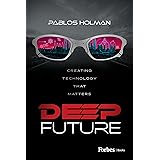Warren Buffett’s Investing Wisdom: Navigating Market Volatility with Timeless Principles
As the financial landscape continues its dynamic shifts, many investors find themselves grappling with uncertainty. Watching the stock market fluctuate, cryptocurrencies experience significant downturns, and the property market adjust can undoubtedly induce anxiety. Indeed, the year 2022 presented substantial challenges with high inflation rates not seen in four decades, geopolitical tensions, and an energy crisis impacting global markets. However, amidst such turbulence, wisdom can be found in the enduring strategies of legendary investors. The accompanying video above expertly introduces how Warren Buffett approaches investing during complex times, offering invaluable perspectives for the discerning investor.
The core issue faced by investors today is the overwhelming short-term noise and unpredictable market movements. Attempting to time the market or predict fleeting economic events is often a futile exercise, as emphasized by Buffett himself. A more sustainable solution, it is proposed, involves adopting a long-term, fundamental approach to investing. This strategy allows for resilience against macroeconomic problems, ensuring potential success over decades rather than mere months.
Mastering Value Investing: Focusing on Long-Term Thrive
A fundamental tenet of Warren Buffett’s investing strategy revolves around identifying companies that are poised to thrive for a decade or more into the future. This approach necessitates a deep dive into the underlying business fundamentals rather than being swayed by daily stock price movements. Several key elements are consistently sought out in such enterprises, forming the bedrock of a robust investment portfolio.
Investing Within Your Circle of Competence
One of the most crucial initial steps for any investor, as highlighted by Buffett, is to invest strictly within one’s “circle of competence.” This concept suggests that individuals should only put their capital into businesses they genuinely understand. Imagine if an investor, despite having little knowledge of advanced biotechnology, were to commit significant funds to a nascent biotech startup. The likelihood of accurately assessing its future prospects, let alone its inherent risks, would be considerably low. Conversely, a seasoned software engineer might possess a natural advantage in evaluating tech companies, understanding their operational intricacies and competitive landscapes more intuitively.
This principle is often likened to a game with “no called strikes” in baseball; there is no penalty for ignoring numerous investment opportunities. An investor is granted the freedom to observe hundreds, even thousands, of stocks and only “swing” at those opportunities where a high degree of confidence in a positive outcome is held. Over time, an individual’s circle of competence naturally expands as knowledge is accumulated across various industries and business models. What remains paramount, however, is not the breadth of this circle but the precise understanding of its boundaries. Decisions are thus made well within these known limits, mitigating unnecessary risk associated with speculative ventures.
The Power of Economic Moats
Another indispensable element of a great company, according to Buffett, is the presence of a wide and deep economic moat. This metaphor refers to a sustainable competitive advantage that protects a business’s long-term profitability and market share from rivals. Without such a moat, even a currently successful company may find its high returns eroded by competition over time. These competitive advantages can manifest in numerous forms:
- Brand Power/Intangible Assets: A strong brand, such as Coca-Cola mentioned in the video, allows a company to command premium pricing and maintain customer loyalty, even if similar products are available. The perceived value and trust associated with the brand create a barrier to entry for competitors. Patents and proprietary technologies also fall into this category, granting exclusive rights to innovations.
- Economies of Scale: Businesses that can produce goods or services at a lower cost per unit due to their large scale of operations possess a significant advantage. This enables them to offer competitive prices while maintaining healthy profit margins. However, it must be recognized that not all scale advantages are equally robust; a slight scale advantage can be easily challenged if new entrants can quickly lower prices or increase market share.
- Switching Costs: When it becomes difficult or costly for customers to switch from one product or service to another, a company enjoys a strong moat. Consider a business using a specific enterprise software system; the time, effort, and retraining required to migrate to a new system often deter them from switching, even if a slightly cheaper alternative emerges.
- Network Effects: The value of a product or service increases as more people use it. Social media platforms or online marketplaces are prime examples. As more users join, the platform becomes more valuable to existing users, creating a powerful feedback loop that makes it difficult for new competitors to gain traction.
It is important to distinguish between having *any* moat and possessing a *sustainable* and *deep* moat. Most companies that manage to list on a major stock exchange and achieve significant revenues possess some form of competitive edge. The real challenge, therefore, lies in identifying those moats that are not easily replicable or eroded by market forces. These are the characteristics that allow a business to generate high returns on invested capital over prolonged periods, shielding its “castle” from competitive assaults. Only by holding businesses with such intrinsic strengths can one feel confident through various economic cycles.
Assessing Management Quality and Integrity
While a company’s product, services, and competitive advantages are crucial, the individuals steering the ship are equally vital. As an external investor, reliance is placed upon a management team to act in shareholders’ best interests, to be transparent, and to demonstrate exceptional skill. The video emphasizes a critical distinction: does the CEO possess a genuine passion for the business itself, or is their primary motivation financial self-enrichment?
Passionate entrepreneurs, who often built the business from the ground up, are frequently observed to have a deeper commitment to its long-term success. Beyond passion, however, a management team’s competence is primarily assessed through two key lenses:
- Debt Management: A financially healthy business typically maintains conservative debt levels. Excessive leverage can introduce substantial risk, particularly during economic downturns, potentially jeopardizing the company’s solvency and investor capital.
- Capital Investment: Skilled management teams consistently make astute investment decisions within the business that generate high returns on capital. This involves allocating resources effectively towards growth opportunities, operational improvements, and strategic acquisitions that enhance shareholder value.
Analyzing management from afar, without direct interaction, might seem like a disadvantage for retail investors. However, Buffett has often acquired businesses without meeting the management team, highlighting that objective assessment is entirely possible. Investors are encouraged to scrutinize annual letters to shareholders, management discussion sections in annual reports, and quarterly conference call transcripts. These documents often reveal whether management is honest and transparent about key business metrics or if there is an attempt to deflect attention from unfavorable results. Dishonesty or obfuscation concerning critical operational data is a significant red flag, signaling either incompetence or a lack of transparency.
Understanding Valuation: The Price Tag of a Great Business
Even a fantastic company with strong moats and excellent management can be a poor investment if purchased at an exorbitant price. The fourth and final piece of Warren Buffett’s strategy is valuation. At its core, investing is the act of outlaying cash today with the expectation of receiving significantly more cash in the future. The initial outlay is, of course, the stock price. Therefore, it becomes imperative to estimate the future cash flows that a business is expected to generate throughout its lifespan and then discount those back to their present value.
This mathematical exercise, known as a present value of cash flows (often referred to as Discounted Cash Flow or DCF analysis), aims to determine an intrinsic value for the business. While the calculation itself might seem straightforward (entering numbers into a spreadsheet, for instance), the real difficulty lies in accurately projecting future cash flows. This requires a deep understanding of the business, its industry, competitive landscape, and macroeconomic factors. It is a skill that is honed over many years and through countless iterations, emphasizing the commitment and temperament required for successful value investing.
The Alternative: Simplicity with Index Funds
Despite the efficacy of Buffett’s intensive value investing strategy, he openly acknowledges its demanding nature. It requires not only extreme commitment to detailed company analysis over many years but also an unshakeable emotional discipline to withstand price fluctuations. For many investors whose financial well-being is tied to their investment decisions, maintaining such emotionless rationality can be profoundly challenging.
For the average investor, therefore, Buffett often recommends a simpler, yet highly effective alternative: investing in broad market tracking index funds. His personal recommendation, dating back to his first stock purchase on March 11th, 1942, highlights this enduring advice. Instead of meticulously researching individual companies, an investor can opt to buy an index fund that tracks a major market index, such as the S&P 500. This approach offers significant advantages:
- Diversification: An index fund inherently provides broad diversification across hundreds or even thousands of companies, mitigating the risk associated with any single company’s underperformance.
- Reduced Effort: It eliminates the need for individual stock picking, in-depth company analysis, and continuous monitoring of financial reports.
- Emotional Detachment: By investing in the aggregate market, the emotional rollercoaster often associated with individual stock ownership is significantly flattened. One is no longer betting on a handful of companies but on the long-term growth and productivity of an entire economy.
- Historical Performance: Broad market index funds in robust economies like the US have historically demonstrated tremendous long-term growth, driven by an environment that fosters business competition, innovation, and increasing productivity.
While no investment carries absolute certainty, betting on the continued prosperity and innovation of a major economy is often considered a less volatile and more reliable path for long-term wealth accumulation than attempting to outperform the market through individual stock selection. It allows investors to set their course and largely ignore daily headlines, confident that their capital is aligned with the overall trajectory of economic growth. Therefore, whether one chooses the path of deep fundamental analysis or the simplicity of passive index investing, the core principle of a long-term perspective remains the most potent tool in any investor’s arsenal.






